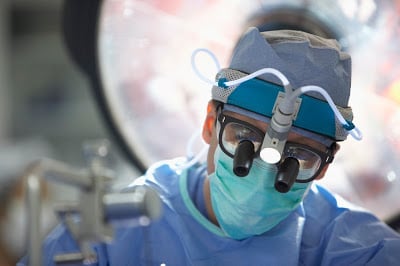Technology has made huge impacts in the field of surgery and because of it, today’s surgeries are increasingly offered through minimally invasive techniques. In general, minimally invasive surgery is safer than open surgery and allows patients to recover faster and with less pain. These advances in surgical techniques make surgery possible in more cases than ever before and with better results.

Advances in general surgery
Minimally invasive surgery is one of the greatest advances in surgical techniques from recent years. Using advanced technology and smaller instruments, surgeons are now able to perform a wide variety of surgeries with small incisions - often less than an inch in length.
Surgery used to mean long hospital stays, time away from home, family, and job, as well as significant pain, a lengthy recovery period, and visible scarring. The smaller incisions used in minimally invasive surgeries give patients less pain and faster recovery. Minimally invasive surgery is most commonly used in:
Benefits of minimally invasive surgery
The primary benefits of minimally invasive surgery arise from the much smaller incisions required to do the work. Simply put, smaller cuts are easier on the body than large, traditional open surgery incisions. In most cases, patients receiving minimally invasive surgery will benefit from:
- A shorter hospital stay
- Less pain and scarring
- Less risk of wound infections
- Faster recovery
- Quicker return to normal activities

Common categories of minimally invasive surgery
Some of these terms are used interchangeably with minimally invasive surgery and all of them use the same basic techniques of smaller incisions and smaller instruments. These are the most common types of minimally invasive surgery:
Endoscopy is a procedure that uses specialized tools to view and operate inside your body. To start an endoscopy, a surgeon inserts an endoscope through a small incision or through an opening in the body such as the mouth. An endoscope is a specialized flexible tube with an attached camera that shows the work being done. This allows surgeons to view problems within your body without having to make large incisions. Your doctor can also use tools on the endoscope to operate or remove tissue.
Laparoscopy refers to a technique where the surgeon makes several small incisions about ½” in size, instead of a single large incision. Small tubes are placed in these incisions and then special instruments and cameras that have been developed to pass through the tubes take the place of the surgeon’s hands and traditional surgical instruments.
Robotic surgery is a method to perform surgery using very small tools attached to a robotic arm. The surgeon controls the robotic arm with a computer. Viewing the inside of the body on the computer monitor provides a magnified, 3-D view of the surgical site, which gives the surgeon great precision, flexibility and control.
Minimally invasive surgery offered close to home
When you need surgery, talk to your doctor about the minimally invasive and advanced surgical options available right here at Logansport Memorial Hospital. Stay close to your family and friends and reduce stress by not having to travel for your procedure.




